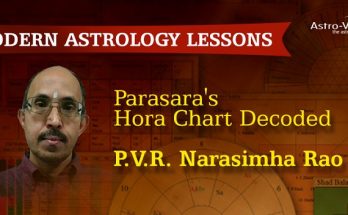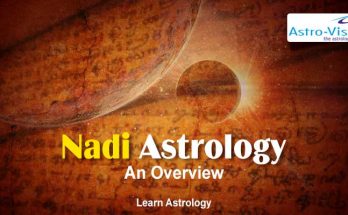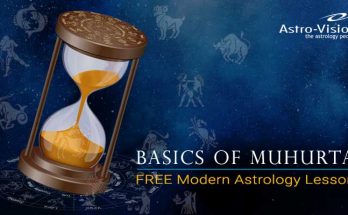“Those who know Astrology can only indicate in a way what will take place in future. Who else, except the Creator Brahma, can say with certainty what will definitely happen!”
Different Factors
The sutra form, with its laconic structure, by itself is sufficient deterrent and its mnemonics by the use of Katapayadi, made more complicated by division by twelve, retaining the remainder etc., render it more difficult, while the involutes and evolutes of aspects and strategic figuring out of the Navamsas are the last straw on the back of the dilettante learner!
Who Was Earlier
A close look at our hagiology and tradition will belie this claim.Parasara was the last of the Titans who gave us a definitive system of prediction. What he wrote was a compendium of knowledge bequeathed to mankind by earlier Rishis from Pitamaha, Narada, Vasishtha, Kasyapa and the rest of them. And Vyasa was the son of Parasara.
As we all know, Vyasa codified the Vedas and imparted them to four of his disciples of whom Jaimini, who was also his
“Vyasa codified the Vedas and imparted them to four of his disciples of whom Jaimini, who was also his son, was the recipient of the Sama Veda.Jaimini was also the founder of the Poorvamimamsa School by which he became famous for the aphoristic (sutra) style of literature.
It is therefore abundantly clear that being Vyasa’s son, Jaimini could not precede his grand-parent “.
son, was the recipient of the Sama Veda. Even today there exist many a passage in the Vedas and Upanishads carrying Jaimini’s name. And he was also the founder of the Poorvamimamsa School of Indian Philosophy, by which he became famous for the aphoristic {sutrci) style of literature.
Among his non-liturgical works are the present astrological sutras, consisting of four chapters parallel to Vyasa’s Vedanta Sutras.
From the above analysis, it will be abundantly clear that being Vyasa’s son, Jaimini could not precede his grand-parent. Actually it is more in keeping with the spirit of the subject that what his Parama Guru had hinted at, the grandson cum disciple explored, expanded and made a full-scale work out of it with his genius and intuitive vision.
Contents
These sutras are widely commented upon, the most famous among them being by the great Neelakanta. Of course the Karika is deemed the most authentic or official gloss, but for which, Jaimini would be a closed book to us.
Age of Jaimini
Place of Jaimini
We shall now consider the place of the Jaimini system in the realm of predictive sciences – whether it can stand by itself and provide a viable alternative to Parasari and Tajaka. No doubt it strikes an entirely new path but anyone who has had some experience of prediction by the Jaimini system will vouch that it is too feeble a stalk to provide full feed for human needs i.e., substantive reading. It is brilliant in parts and specific. We are appending a stunning example of its brilliance but which is neither comprehensive nor exhaustive.
We would like to quote the late Prof. B. Suryanarain Rao in respect of the use of Jaimini. He says “When different systems, apparently contradictory, are enunciated by Maharishis, the wisest thing would be to take all of them into careful consideration, add his own experience, judge all of them with a diligent eye and make a harmonious whole so that, all of them (put together) may prove successful and satisfactory…. Maharishis by their experience form different mental visions and gave principles in all sciences which will be found to be agreeable on deeper analysis.”
We may add: It is perfectly in order for us that while considering a chart by one system, say Jaimini, it could be simultaneously, if not jointly, examined by one or more of the other systems too, say Parasari, Tajaka and even the western, of course each by its own parameters, as the subject of analysis is one and the same.
Pada Lagna
These treatments do not mean that we should turn the Nelson’s eye to some of the shortcomings, real or apparent in the extant text and commentaries of the Jaimini sutras. They being a hard nut to crack, even the Karika could not escape a faux pas or two. Take Sutras 1-3-19/21. They say that when Pada Lagna falls in the 6th, 8th or 12th house, one suffers from poverty and the Bhavas are spoiled. Pada Lagna is defined in Sutra 1-1-29 which is interpreted as follows: That house which is as distant from the Lagna lord as the Lagna is from the Lagna lord. No Pada Lagna under the above definition falls in 6th, 8th or 12th! This can be proved mathematically thus: (2n – 1) where n is the distance in terms of the number of houses the Lagna lord is removed from the Lagna. It is easily seen that it can only be an odd number, which precludes any of the Trika houses becoming Pada Lagna. Now, can we say that we have caught the Rishi on the wrong foot? A moment’s reflection will reveal that we alone are at fault in the interpretation of the relevant sutra. which defines Pada Lagna. Having regard to the fact that Jaimini is a stickler on degrees-to wit, Atma and other Karakas, his specialities — we have to import the same parameter of degrees, namely, the arc or angle in degrees from the Lagna point upto the point in the house occupied by its lord. It makes little difference if you carry out the operations clock-wise in the case of unexpected even signs etc., (as required) for, the distance will only be complementary.
Here is an example. Take a case where the Lagna or the Ascendant is 248° (Sagittarius) and Lagna lord Jupiter at 355° (Pisces). The arc between them is 355° – 248° or 107°. This added to 355 yields 102° after removing a full circle of 360°, which signifies Cancer, 8th house from the Lagna. If we take the full sign, we land at Gemini which is the 7th house. The Rishi is now beyond cavil. Alternatively we may have to try Navamsas. The same rules will apply to Upapada too.
Adjacent Houses
…if we are to accept the meaning of the sutra as meaning Chara Rasis aspect Sthira etc., are we to assume that during JaiminVs time, the type of horoscopic chart was the same as the current South Indian type? And was it prevalent that way throughout the country? If so, why not make it today the lingua franca of chart language for all of India?
as translated normally. But the Karika has it that sutra 1-1-3 means excepting the adjacent houses. The Bombay edition of Jaimini Sutras points out that to translate (cha) as except is a grammatical misdemeanor and opts for the positive interpretation and so does Prof. Abhyankar in his English translation, although he refers to the Karika meaning in his Sanskrit commentary.
In this connection serious students would have come across cases in predictive sciences, where words can carry opposite meanings. We can cite several instances. In a work on rekhas (palmistry) by name Skanda Sareeraka, several lines on the palm are called by names with effects opposite to their meanings. For instance, there is one rekha by name mail which means intelligence-, but the commentator interprets its meaning as mati mandatva or lack of intelligence on the basis of Vipareeta Lakshana Nyaya. We shall introduce one more evidence later supporting the negative meaning.
Incidentally if we are to accept the meaning of the sutra as meaning Chara Rasis aspect Sthira etc., are we to assume that during Jaimini’s time, the type of horoscopic chart was the same as the current South Indian type? And was it prevalent that way throughout the country? If so, why not make it today the lingua franca of chart language for all of India? •








